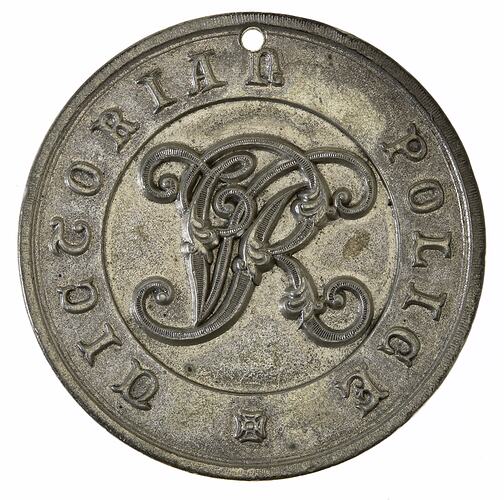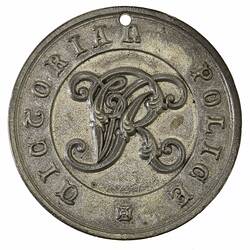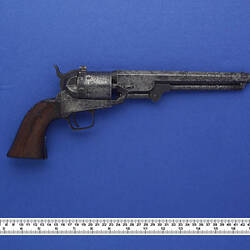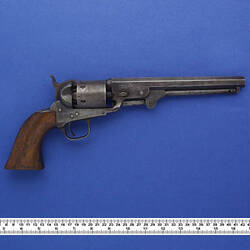Prior to the establishment of the Police Force, a number of policing groups had been operating in Victoria, including the Gold Escorts, the Water Police, the Border Police, the Metropolitan (City) Police, the Mounted Police, the Geelong Police, the Gold Fields Police, the Rural Bench Constabulary and a Native Police Corps.
The Victoria(n) Police was formally established on 8 January 1853, when the new Police Regulation Act became law. The first Chief Commissioner was William Henry Fancourt Mitchell. He initially he had a total strength of 875 men, including 26 officers, serving a Victorian population of 168,000. Six police ranks were established: Inspector, Sub Inspector, Chief Constable, Sergeant, Cadet and Constable. The first Victoria Police depot was established in Richmond and included a police hospital.
In 1859 buildings were erected in Russell Street, Melbourne, which served as the Victoria Police headquarters until 1977.
Police in the nineteenth century acted as stand-ins for soldiers, firemen and even debt collectors, in addition to fighting crime and maintaining public order. They were present at the Eureka Stockade in 1854 and hunted the Kelly Gang in 1879/80. The Force has also overseen every Royal visit in Victoria.
The Victoria Police Association - the police officers' union - was formed in 1917. Six years later, in 1923, Victoria Police members went on strike, prompted by member's dissatisfaction with the lack of state funded pension and an inequitable supervisory system. Full scale riots and looting led to three deaths. Civilian volunteers were employed by the state to help restore order. 634 members were discharged and two members dismissed.
The first two women were appointed to Victoria Police in 1917. Madge Conner and Elizabeth Beers were unsworn and had no powers of arrest. They were appointed as police agents to assist in cases involving women and children. In 1924 four women, including Madge Conner, were sworn in on the same basis as male police members. By 1929 four more women were appointed to Victoria Police. In 1972 married women were allowed to join, and by 1973 policewomen could be appointed to all branches of the organisation.
Victoria Police headquarters moved to a multi-storey office building at 380 William Street in 1977. In 1995, the William Street headquarters and Russell Street police complexes were both relocated to the Victoria Police Centre at 637 Flinders Street, Melbourne.
The role of Victoria Police has expanded from one focused primarily on law enforcement, to one of community assistance, guidance and leadership. Police have become more involved with local communities in a wide variety of ways, including Neighbourhood Watch, crowd control at AFL games and the collection of farming statistics in rural areas.By the early 21st century 20% of police work was directly related to fighting crime; the larger part of its work related to general policing and assisting the community.
References:
Haldane, Robert (1995). The People's Force : a history of the Victoria Police, 2nd ed., Carlton, Melbourne University Press.
Victorian Police website: http://www.police.vic.gov.au
More Information
-
Keywords
-
Localities
-
Authors
-
Article types



